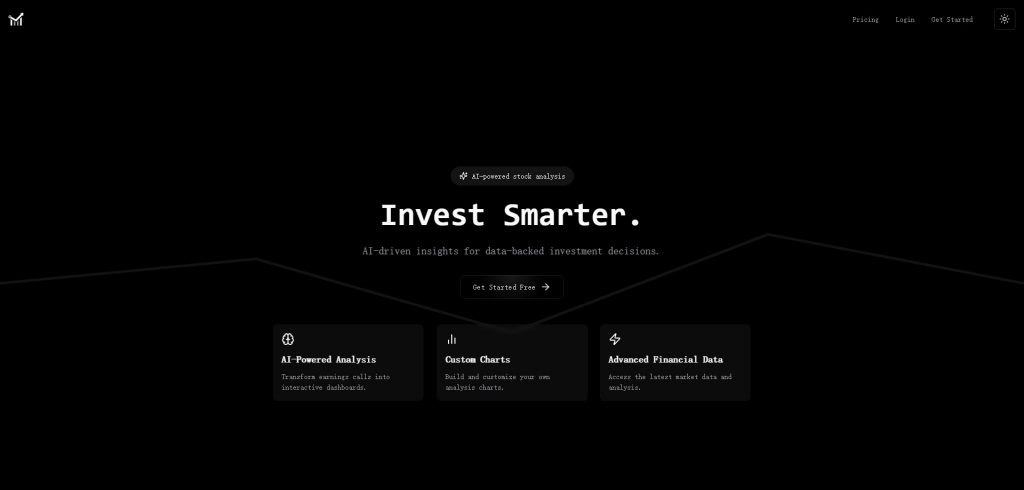20 Free Facts For Picking AI Stock Trading Sites
20 Free Facts For Picking AI Stock Trading Sites
Blog Article
Top 10 Tips For Assessing Market Coverage Using Ai Stock Predicting Or Analyzing Trading Platforms
Market coverage is an essential factor when evaluating AI trading platforms for stock prediction or analysis, as it determines the range and depth of markets and assets you are able to access. Market coverage is essential because it allows you to diversify your portfolio, learn about global markets, and adapt various trading strategies. These are the top ten ways to evaluate the market coverage of these platforms.
1. Evaluate Supported Asset Classes
Stocks: Make sure that the platform contains stocks from all major stock exchanges, such as NYSE, NASDAQ and LSE.
ETFs - Check to see if your platform supports an extensive selection of ETFs which offer exposure in many diverse regions, sectors or themes.
Options and futures. Verify that the platform is able to handle derivatives, such as futures, options and other instruments that leverage.
Forex and commodities. See whether there are any forex pairings available, along with precious metals, commodities for energy and other agricultural commodities.
Cryptocurrencies: Check to see whether your application supports major cryptocurrencies like Bitcoin, Ethereum and altcoins.
2. Check for Geographic Coverage
Global markets: Make sure that the platform includes major global markets like North America, Europe and Asia-Pacific.
Regional focus: Check whether your platform has a particular area of focus or market that matches with your trading needs.
Local exchanges: Verify whether your platform is compatible with local and regional exchanges relevant to your business or your strategy.
3. Consider comparing real-time data with delayed data Delayed Data
Real-time information is vital to speed up decision-making, particularly in active trading.
Data that is delayed: Find out if delayed data is available at no cost or at a reduced cost, which could be sufficient for investors who are looking to invest long-term.
Data latency: Check if the platform minimizes latency for real-time data feeds especially in high-frequency trading.
4. Review the availability of historical data
The depth of historical data: Verify that the platform provides extensive data (e.g. over 10 years old) for backtesting.
The granularity of the data: Determine if the historical data contains intraday, daily weekly, monthly, and daily the granularity.
Corporate actions: Make sure that historical data takes into consideration stock splits (if relevant), dividends, and any other corporate action.
5. Check the Market Depth and Place an Order Books
For better price discovery Make sure the platform includes Level 2 data.
Spreads of bids: Make sure that the platform is displaying real-time bid spreads to ensure accurate pricing.
Volume data: Ensure that the platform has detailed data on volume for analysing liquidity and market activities.
6. Assess how much coverage is available for Indices and Sectors
Major indices: Make sure the platform covers major indices (e.g., S&P 500, NASDAQ 100, FTSE 100) for benchmarking and index-based strategies.
Sector-specific data: To perform a specific analysis, determine if the platform has data from specific industries (e.g. health care, technology, etc.).
Custom indices. Determine if your platform lets you create and track custom indexes on the criteria that you set.
7. Integrate News and Sentiment Data
News feeds - Ensure the platform integrates real-time news feeds for market-moving stories from reputable (e.g. Bloomberg or Reuters) sources.
Sentiment analysis Check to determine if your platform has sentiment analysis tools that use social media data, news sources, or any other source of data.
Event-driven Strategies: Verify whether the platform supports strategies that are triggered by events (e.g. economic reports and earnings announcements).
8. Test for Multi-Market Trading
Trading in cross-markets: The system should permit trading across different asset classes or markets through a single interface for users.
Currency conversion: Find out if your platform supports multi-currency trading and automatic currency conversion.
Support for various time zones: Make sure the platform allows trading on global markets in different time zones.
9. Review the coverage of different data sources
Alternative data: For unique insights, verify whether your platform is using other data sources (e.g. satellite imagery, web traffic or credit card transactions).
ESG Data: Check to see if there are any data on the environment, social or governance (ESG data) included in the platform for socially responsible investing.
Macroeconomic data: Check that the platform offers macroeconomic indicators for fundamental analysis (e.g. GDP, inflation rates, rate of interest).
Check the User Feedback and Review the Market Reputation
User reviews: Read reviews from users to assess the platform's market coverage and the reliability.
The reputation of the market: Find out whether there are awards or experts who recognize the platform for its broad coverage of markets.
Testimonials and case studies They will showcase the performance of the platform in particular asset classes or markets.
Bonus Tips
Trial period for free: Try the market coverage of the platform as well as its data quality by using the demo or trial for free.
API access: Ensure that the API on the platform permits you to access programmatically market data for custom analysis.
Customer Support: Ensure that the platform can provide support for any data-related or market-related issues.
Check these points to determine the market coverage offered by AI stock trading platforms. Choose a platform with access to the markets, data and tools that you need to make trading successful. Market coverage is important for diversifying portfolios, identifying new opportunities and adapt to market conditions. Follow the top rated chart analysis ai for blog info including best copyright prediction site, trading ai bot, chart analysis ai, best stocks to invest in, ai copyright trading bot, ai trading platform, invest in ai stocks, artificial intelligence stocks, best stocks to invest in, free ai trading bot and more.
Top 10 Tips For Evaluating The Ai-Powered Stock Trading Platforms As Well As Their Educational Resources
Users must evaluate the educational materials provided by AI stock prediction and trading platforms in order to fully comprehend the platform and how it works, as well as to make a well-informed decision when trading. Here are 10 top tips for assessing the quality and value of these tools.
1. Complete Tutorials and Instructions
Tips: Check if there are tutorials or user guides for both beginners and advanced users.
The reason: Clear and concise instructions can help users navigate and understand the platform.
2. Video Demos and Webinars
There are also webinars, live training sessions or videos of demonstrations.
Why: Visual and Interactive content can help you grasp complicated concepts.
3. Glossary of terms
Tips: Make sure the platform has the glossary or definitions of key financial and AI-related terms.
Why is this? It will assist users, and especially beginners to comprehend the terminology employed on the platform.
4. Case Studies and Real-World Examples
Tip. Check whether the platform has case studies that show how AI models could be applied to real-world scenarios.
The reason: Examples of practical use demonstrate the power of the platform and aid users to understand its applications.
5. Interactive Learning Tools
TIP: Find interactive tools, such as tests, simulators, or sandboxes.
Why Interactive tools are a great way to learn and test your skills without having to risk cash.
6. Updated content
Consider whether educational materials are regularly updated in order to be current with market trends, new features, or changes to the regulations.
The reason: Incorrect or outdated information can cause misunderstandings, and even incorrect usage of a platform.
7. Community Forums & Support
TIP: Find active community forums or support groups where members can post questions and exchange ideas.
Why: Peer-to-peer support and experienced guidance can help improve problem solving and learning.
8. Certification or Accreditation Programs
Find out if the platform offers certification programs and accredited courses.
What is the reason? Recognition of students' achievements can encourage them to study more.
9. Accessibility & User-Friendliness
Tip: Check how easily accessible and user-friendly the educational resources are.
Why? Easy access allows users to study at their own speed.
10. Feedback Mechanisms for Educational Content
Tip - Check if you can provide feedback to the platform about the educational material.
Why: The feedback of users is helpful in improving the quality and relevancy of the resources.
Different learning formats are offered.
You must ensure that the platform you choose to use is flexible enough to accommodate different learning styles (e.g. audio, video as well as text).
By carefully evaluating all of these aspects by carefully evaluating each of these factors, you'll be able to determine if the AI-powered stock prediction and trading system offers robust educational tools that can help you maximize it's potential and take informed trading decisions. Take a look at the best stocks ai for more recommendations including best ai stocks, chart ai for trading, chart analysis ai, using ai to trade stocks, ai stock predictions, best ai for trading, stock analysis app, stock predictor, ai for stock trading, ai stock trading and more.